Problems of Modern CS2 Esports. What Frustrates Pro Players and the Community?
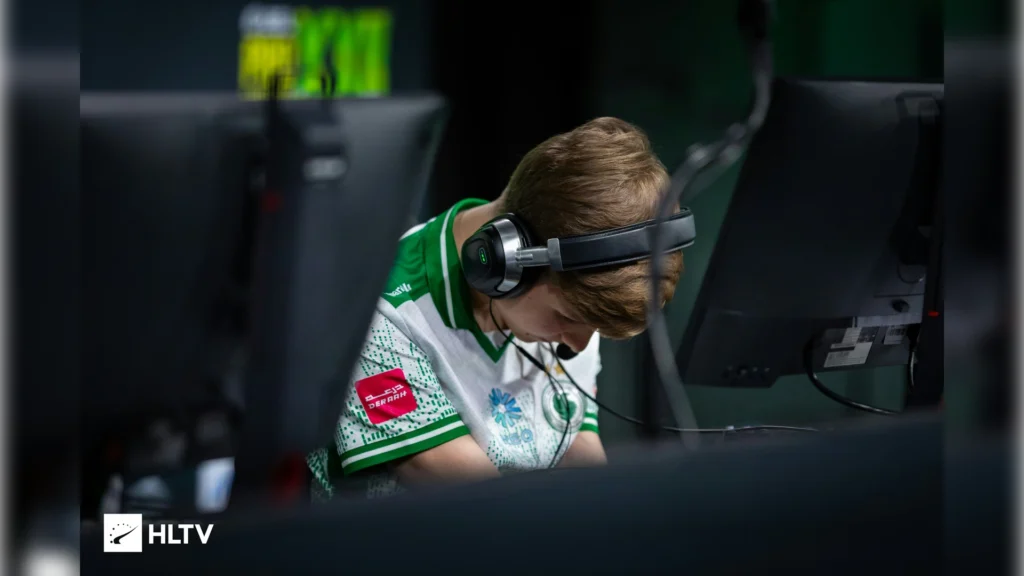
Our industry is developing incredibly fast, and when everything happens at such a pace, it’s hard to avoid mistakes. Unfortunately, the current state of the professional scene leaves much to be desired, and this is noticed not only by the participants themselves, but also by regular viewers. In this article, we don’t want to find someone to blame for this situation, but only to explain what exactly is going wrong and what moments deserve attention right now, before it’s too late.
Confusing and Illogical VALVE Rating
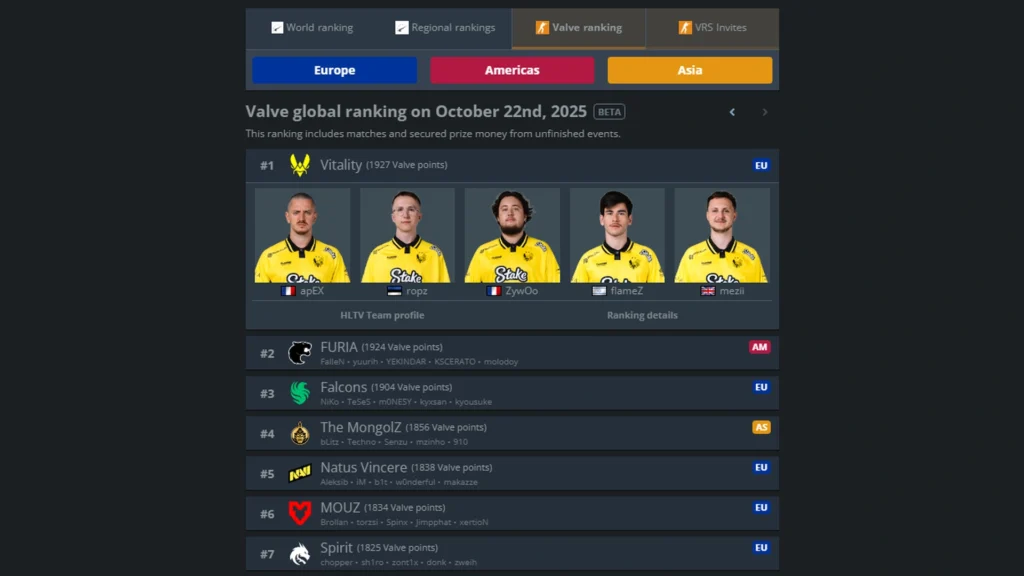
Initially, this system was supposed to make tournament invites more transparent and fair. “No more partner leagues,” they said, but what did we get in the end? It all started with problems: the rating wasn’t updated in real-time, which meant teams didn’t receive invites after successful performances and already earned VRS points. But now, thanks to “live” mode, we can see several teams change places at the top of the VALVE rating during a single tournament. Essentially, the VRS system doesn’t even allow us to identify the best team, and everyone continues to rely on the HLTV rating.
It’s also completely unclear why teams can lose points even when they win. And most importantly, VALVE doesn’t respond to such precedents. However, when they need to strip a tournament of its rating status, they’re even ready to change the rules a couple of hours before the start, as happened at CS2 Asia Championships 2025. According to Virtus.pro, they repeatedly clarified with VALVE in writing and verbally whether they could compete with a substitute at the tournament in China, and received positive answers. But when the team had already arrived in Shanghai, the organizers announced that everything had changed, and VP had to urgently bring in another player.
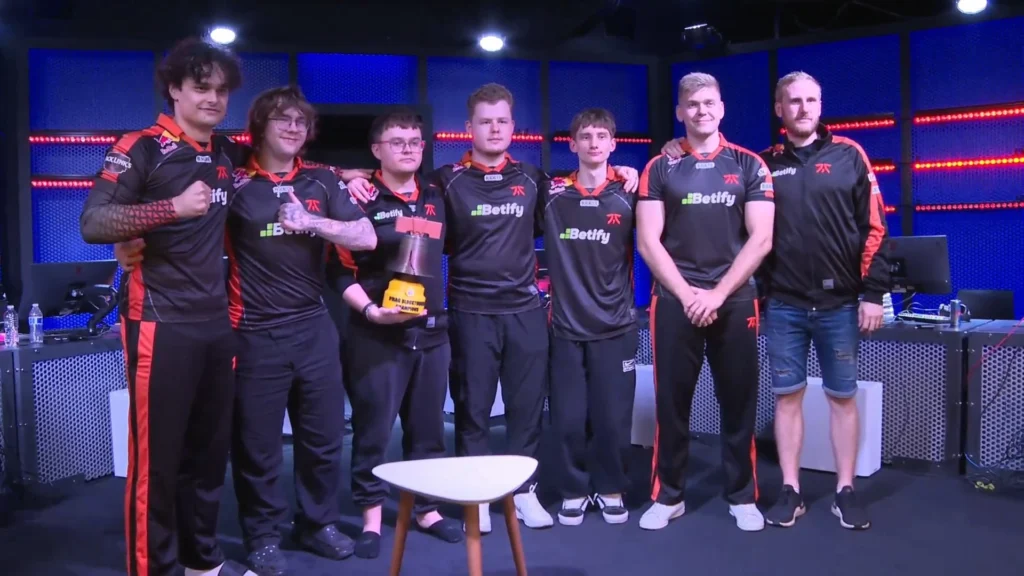
The confusion with Major invites was certainly interesting to watch, but put yourself in the teams’ shoes: fnatic took the last slot by winning Fragadelphia Blocktober 2025 with a total prize pool of $10,000. And a huge number of teams tried to gain extra points in a similar way, attending any tournament with VRS status. The battle for tournament invites turned not into competition, but into tricks in the spirit of “who can come up with the most sophisticated way to game the system.” PARIVISION made it to the Major thanks to Majestic LanDaLan 3, organized by betting company BetBoom. Ironically, BetBoom Team played in the final of this event, and if they had won, they would have received a slot in Budapest – it turns out some teams are even creating tournaments to farm points. At the same time, Brazilian organization paiN refused all invites for three months, played 13 matches for the entire season, and went straight to the third stage of Starladder Budapest Major 2025.
Will they try to fix anything? We think we all know the answer, but let’s hope for the best, because after a year of “active use” it became clear: everything doesn’t work quite as expected.
Dense Tournament Schedule
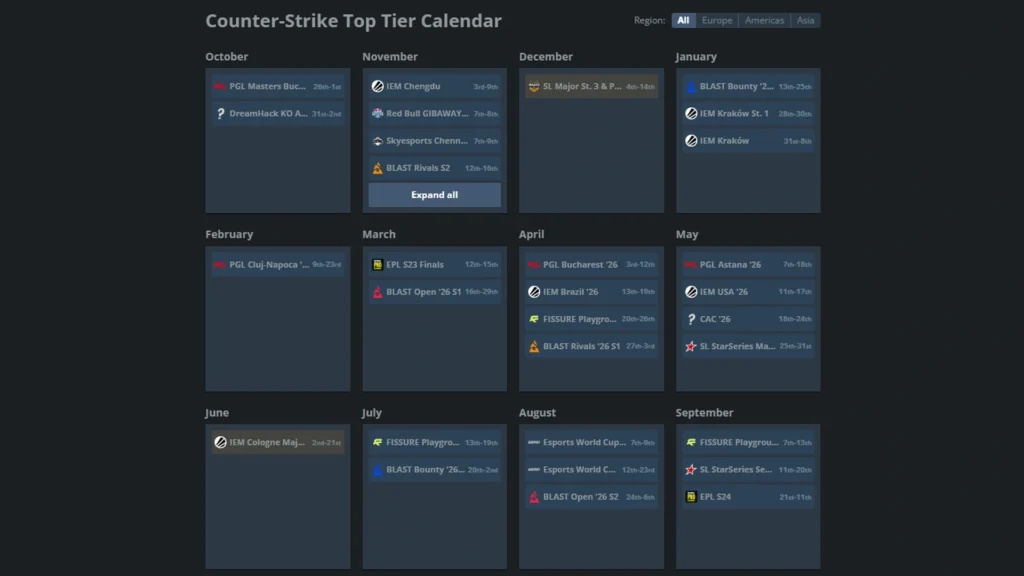
From the problem of grinding VRS points came another, no less acute problem – an overloaded schedule that forces pro players to work at their limit. Tournaments follow one after another with minimal breaks, including flights across continents, leaving little time for rest, practice, and personal life. As a result, we see mediocre CS: mistakes, decreased motivation, and burnout, when teams can’t show their best level.
Players openly express dissatisfaction. For example, quite recently even such a young and obsessed player as m0NESY stated: “I wish they would cut the number of tournaments in half. Right now they’re just throwing them at us.” Aleksib from NAVI previously complained that the dense schedule has a “painful” effect on motivation, emphasizing that recent results “don’t look pretty on paper,” but this is due to lack of rest and opportunity to practice. Pro players from different teams have repeatedly mentioned the dense schedule as a source of fatigue, leading to decreased game quality and risk of deteriorating physical and psychological condition.
All of this is a very bad trend, especially if we look at the experience of the professional Dota 2 scene. Last year after The International, a huge number of renowned players, including world champions, announced they needed a break from their careers. Some returned after six months, some returned and left again, and some ended their careers because they couldn’t find a team or simply didn’t want to. We don’t want a similar situation to repeat in CS2, so this problem shouldn’t be treated as “weakness” or criticized in the spirit of “they’re just playing a computer game.”
Conflicts Among Tournament Operators
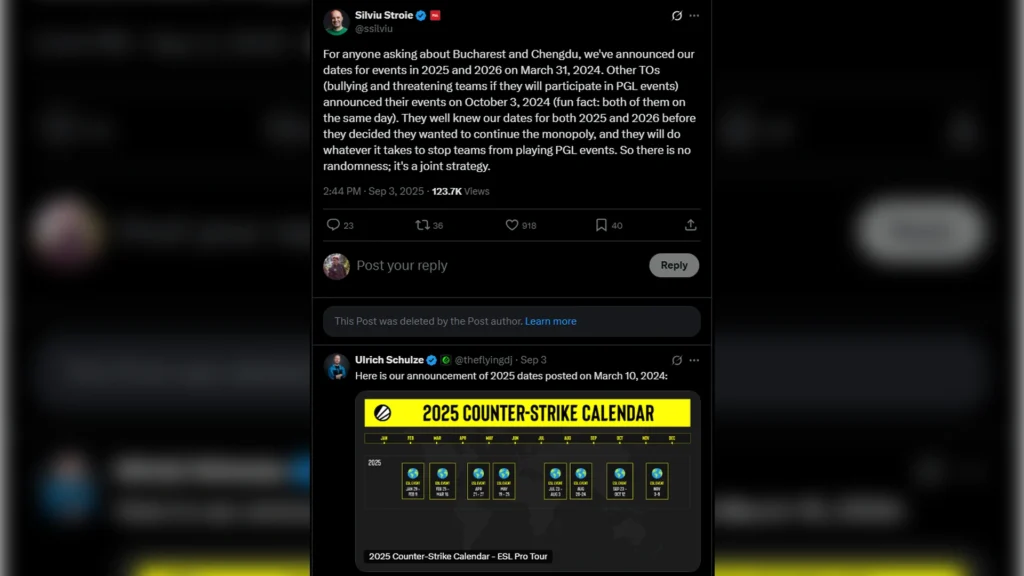
All previous problems partly stem from tournament operators who continue an endless struggle for top teams’ participation in their events. Organizers increase prize pools, create the most favorable conditions possible (from moving tournaments to convenient locations to providing top hotels, inviting family members, etc.).
Moreover, this is no longer a behind-the-scenes “war,” but real open conflicts. For example, before invites to the upcoming PGL Masters Bucharest (which was originally supposed to take place in Belgrade, but PGL had some issues), PGL’s CEO directly accused ESL of obstructing fair competition. Allegedly, ESL pressured teams, threatening to refuse invitations to their tournaments if they participated in PGL Bucharest. The arguments were also quite interesting: PGL’s CEO referenced a post with his own tournament calendar and said that ESL knew about PGL’s event dates in advance and specifically scheduled IEM Chengdu for the day after PGL Bucharest ended, so teams wanting to attend both tournaments couldn’t do so.
The situation was resolved quite amusingly, as it turned out ESL announced their tournaments even earlier than PGL, to which PGL’s CEO couldn’t respond. There’s one conclusion here: even such veterans as PGL are experiencing problems (for example, Vitality never attended their event, Spirit and NAVI only once, and at the upcoming PGL Bucharest there will be only one team from the top 10). And all this is because there’s no one to regulate TO work: VALVE came in, canceled partner leagues, and that’s where all the “regulation” ended. The scene is drowning in event oversaturation, devaluation of tier-1 matchups, which risks losing the community’s interest.
New Rating 3.0 on HLTV
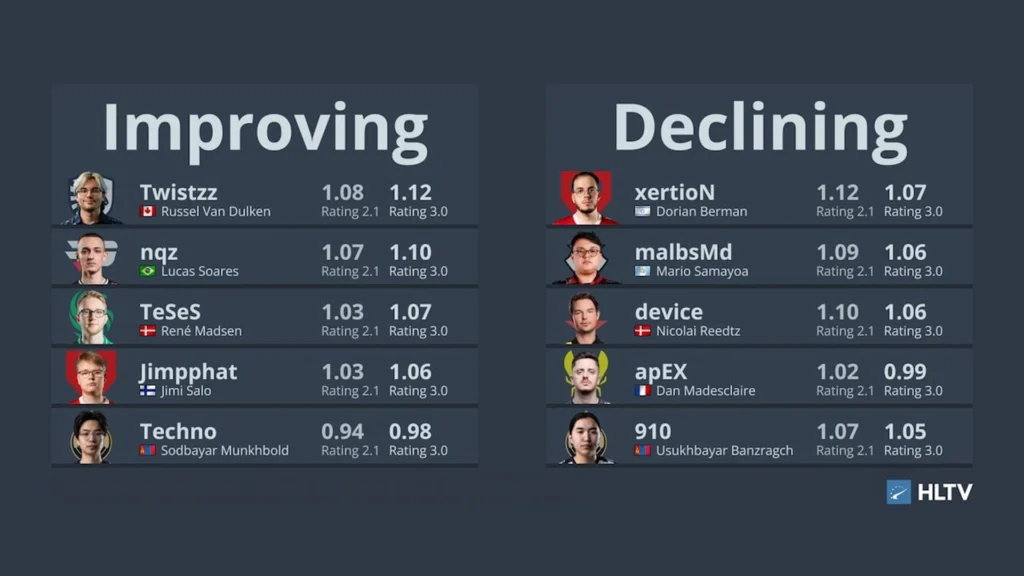
Among recent problems, we can’t fail to mention Rating 3.0. In August 2025, HLTV presented the biggest update to the player rating system since 2017. The new version is based on Rating 2.1 but adds economic adjustments (accounting for round economies, like eco frags) and the Round Swing metric, which measures the impact of a player’s actions on the round outcome. The average rating is still 1.00 per event, but now the formula accounts for more context: for example, eco frags became less valuable to emphasize contributions in full economic rounds.
However, the update caused a wave of criticism for reduced objectivity. Many players and fans note that calculations aren’t always transparent: the system sometimes incorrectly interprets moments like clutches or opening frags, causing editors to resort to manual editing of HLTV statistics. This makes the rating less reliable, because manual editing lacks objective assessment – why do we need new numbers that can be corrected at any moment? The community complains that Rating 3.0 focuses more on economy than individual skill, and this confuses fans, making comparisons less intuitive and reflective of reality. Without improvements, this could undermine HLTV’s authority as the main source of statistics, so urgent intervention is required here as well.
Conclusion
Of course, these aren’t all the problems: for example, we didn’t mention the eternal story with cheaters and match-fixing, as this has been with us for too long. The things we described in this article only appeared in 2025 and have already made serious adjustments, so they can’t be ignored while there’s still time.
Despite everything, we love this game and wish it only the best. However, not attempting to draw attention to these issues means remaining indifferent.

Author: Alex
Alex is an author and esports observer with more than seven years of experience. He specializes in analyzing new releases in the world of computer games, gaming services, and in-game economies. Alex shares practical experience and an expert perspective on the development of gaming, helping readers understand complex mechanics and stay up to date with the latest news.